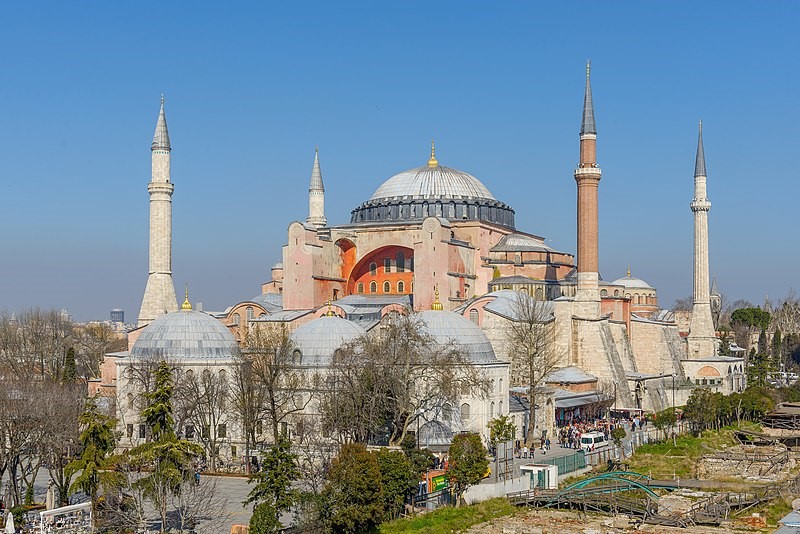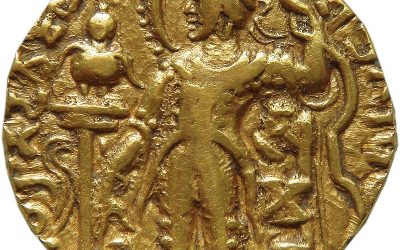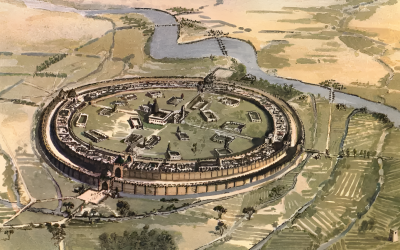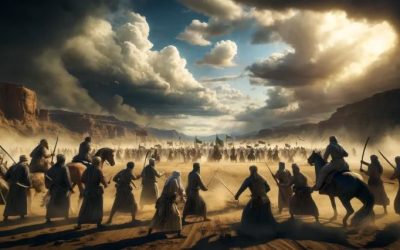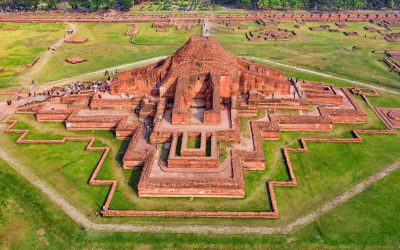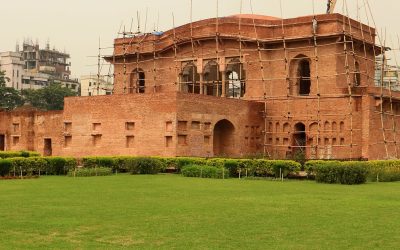Irfan Amin Patwary, Jahangirnagar University, Bangladesh
A long time ago, approximately 660 BC. Near Athens was a city called Megara. Byzos was a citizen of this city. The population of Greece was increasing day by day, and this was what Byzos was worried about. So he went to Delphi to get proper guidance on this matter.
Note that Delphi was very important as the temple of god Apollo in the ancient world. This place was considered a medium to reveal various prophecies. Byzos expressed his apprehensions on his way to Delphi, wanting to know where he would go and establish a new settlement. It was said that he only heard one word whispered in reply, “Unlike the blind”.
Byzos did not understand the exact meaning of this word. But he did not sit still, he went out to the northeast in the hope of establishing a new settlement along the Aegean Sea. On his way to the Bosphorus Strait, he realized the true meaning of the prophecy heard at Delphi. Looking at the Greek city of Chalcedon, he felt that its founders must have been stupid and blind. Because there was a very nice place on the other side of the Bosphorus strait that was only half a kilometer from Chalcedon. Byzos therefore moved there and built a new settlement. He named the place Byzantium after him.
This was about nine hundred years before the establishment of the Byzantine Empire. Because the Byzantine Empire was established around 330 AD. Historians have doubts about how the settlement was built in that place. However, the most popular and accepted opinion so far is the story of Byzos. Now let’s begin the story of the beginning of the Byzantine Empire.
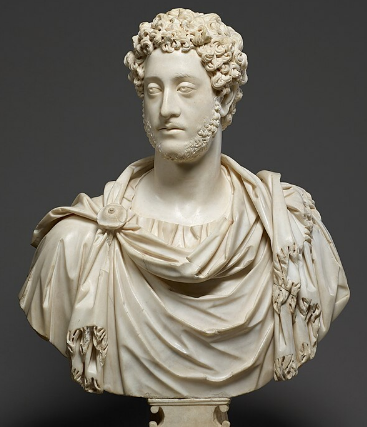
Lucius Aelius Aurelius Commodus (31 August 161 – 31 December 192)
At the beginning of the Byzantine Empire, Lucius Aelius Aurelius Commodus was the emperor of Rome from 180 to 192 AD. Rome’s past glory was slowly waning during his time, and the empire was in danger of falling. Commodus was murdered in 192 AD. After that, a civil war broke out over the power of Rome. In this fight were Partinax, Didius Julianus, Pesenius Niger, Claudius Albinus and Septimius Severus. In the end, Septimius won the battle. He served as the ruler of Rome from 193 to 211 AD. This period of fighting between the five claimants to the throne is known in history as the “Year of the Five Emperors”
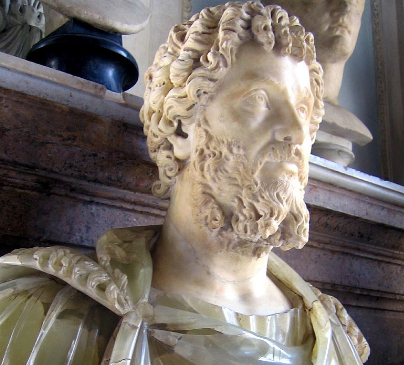
Septimius Severus (11 April 145 – 4 February 211)
Severus Alexander served as ruler of Rome from 222 to 235 AD. When he was assassinated in 235 AD, the Roman Empire fell into anarchy once again. The economic condition of the empire was very broken, the horrors of the plague were spreading across the kingdom, other neighboring empires were attacking, and there were also civil wars among themselves. A total of twenty-six people were seen as claimants to the throne for the next fifty years. Most of them were generals of the Roman Army.
Diocletian ascended the throne of Rome in 284 AD. It was during his reign that Rome basically began to stabilize again. To alleviate the unrest in the state, he introduced a new system of governance, in which Rome was divided into regions with individual rulers controlling them. But this stability did not last long. Civil war once again started in the Roman Empire. Constantine the Great, also known as Constantine I and Saint Constantine, eventually defeated Maxentius and Licinius and established himself as the ruler of Eastern and Western Rome.
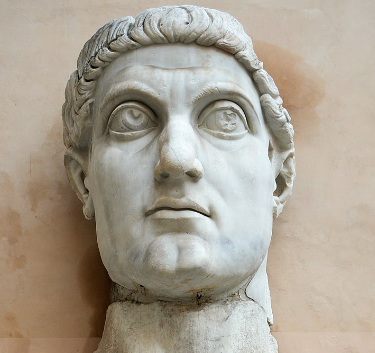
Constantine the Great (27 February 272 – 22 May 337)
Geographically, Byzantium was located on the European side of the Bosphorus Strait. It served as an important communication and trading center between Europe and Asia Minor. Emperor Constantine I moved the capital of his Roman Empire to Byzantium in 330 AD. At this time he focused on building Byzantium as the new Rome. The city continued to prosper from various aspects such as military, financial, geographical, etc. It was eventually named Constantinople after Constantine. Although Constantine was the ruler of the entire Roman Empire, it was not possible to maintain this integrity for long after his death. He died in 337 AD.
Let’s move a little further to the year 364. The ruler of Rome then was Valentinian I. Shortly after his accession to the throne, he shared the reigns of the empire with his brother Valens. While Valentinian looked after the affairs of the West, his brother Valens looked after the affairs of the East.
Theodosius I was the last ruler of the entire undivided Roman Empire. Of course, he also completed the task of dividing the empire. He entrusted the western (Rome) and eastern (Constantinople) parts of the empire to his two sons, Honorius and Arcadius, respectively. However, this division seems to have caused problems for the Western Roman Empire. Then the attacks of the Han, Goths, and Vandals one after the other broke their spine. The Western Roman Empire fell in 476 AD with the defeat of Romulus Augustus at the hands of the barbarian commander Odoacer.
The reason for the survival of the Byzantine Empire
The question may come to anyone’s mind now, why was the Eastern Roman Empire not attacked? In fact, the geographical location played a major role in the survival of this part of the Roman Empire. The capital Constantinople was located near the Bosphorus Strait. As a result, it was very difficult for the enemy to attack there. The kingdom was rich in wealth, strict administration, and political stability. Besides, important decisions in the economic and military affairs of the state also came from many leaders of the eastern part. Due to these reasons, one part of the Roman Empire fell, but the other part survived in its glory.
Educational and Religious Territorial Distribution
The Byzantine Empire was governed by Roman law. But Latin was the main language of the region. Besides, the number of Greek-speaking people was also large. Students studied Greek history, literature, and culture. In 451 AD the Council of Chalcedon divided the entire Christian world into 5 regions. These are – Rome, Alexandria, Constantinople, Antioch and Jerusalem. In between, the Byzantine emperor was in charge of the Constantinople region. He was also the head of the church. However, when the Muslims conquered Alexandria, Antioch, and Jerusalem in the seventh century, the Byzantine emperor became the spiritual leader of most of the Christian countries of the East.
Improved during the reign of Emperor Justinian I
Justinian I was the emperor of the Byzantines from 527 to 565 AD. During his time, this empire was greatly improved. Along with North Africa, Justinian’s army conquered parts of the Western Roman Empire that had been lost to time. As a result, most of the coastal areas of the Mediterranean Sea were in the possession of the Byzantines. During this period, many famous historic structures were built, among which the most famous Hagia Sophia Church (Aya Sophiain Bengali) is currently used as a Mosque. He also made many reforms in the governance system.
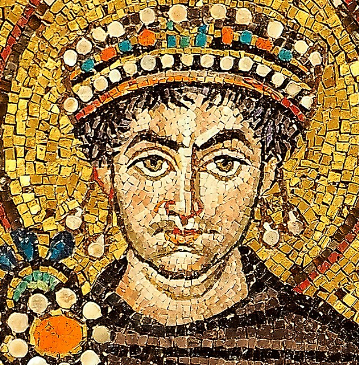
Justinian I (482 – 14 November 565)
By the time Justinian died, Byzantium was the largest and most powerful empire in Europe. However, the debt burden of the state increased exponentially as a result of continuous wars. Subsequent rulers took this debt relief step by imposing additional taxes on the people. Again, there was no army necessary to protect the sovereignty of this huge state. In the seventh and eighth centuries, therefore, invasions by the Persians and Slavs, along with political strife and economic weakness, threatened the existence of the empire. The greatest fear for the Byzantine Empire in the seventh century was the rise of Muslims. They were defeated by the Muslims in one war after another. At the end of this century, Syria, Jerusalem, Egypt and North Africa moved from the Byzantine map to the map of the Muslim world.
Byzantine Iconoclasm
On the other hand, in the seventh century, another story of infighting began in the Byzantine Empire. The authorities of Eastern Churches (Eastern Orthodox Church, Oriental Orthodox Church, Assyrian Church of the East, and Eastern Catholic Churches) began to object to the use of various religious images and symbols. This period known as Byzantine Iconoclasm is divided into two parts. The first iconoclasm lasted from 726-787 AD, and the second iconoclasm lasted from 814-842 AD. It was led by the then Byzantine Emperor Leo III. At that time many images were destroyed, and people who looked at those images with respect had to face torture. On the other hand, the Western Church and the Roman Catholic Church were in favor of using these images. As a result, the dispute continues to increase. Finally, in 843 AD, a church council led by Emperor Michael III ruled in favor of the use of images, ending the long-running conflict.
Dramatic Rise
The Byzantine Empire began to change under the rule of the Macedonian dynasty established by Michael III’s descendant Basil. The period was the late 10th and early 11th century. By the time of Emperor Justinian, the Byzantine Empire’s control of trade, wealth, prestige, and influence in the international arena all increased. Government patronage started coming to painting. Churches, palaces, and various cultural institutions were decorated, and research on Greek history and literature began. The Greek language was used for administrative activities at that time. Monks used to run welfare institutions like orphanages, schools, and hospitals. Many people in the Central and Eastern Balkans and Russia were then converted to Christianity.
Ending a Chapter of Eleven Hundred Years, However, the happiness of the Byzantines was temporary. From 1095 to about 1291 AD, the empire was weakened by constant crusades. In 1259, the Byzantine Empire entered the era of the Paleologan emperors under Emperor Michael VIII. Since then, its economic condition gradually worsened. The empire came back from the brink of collapse many times. But this financial crisis makes them dig their graves.
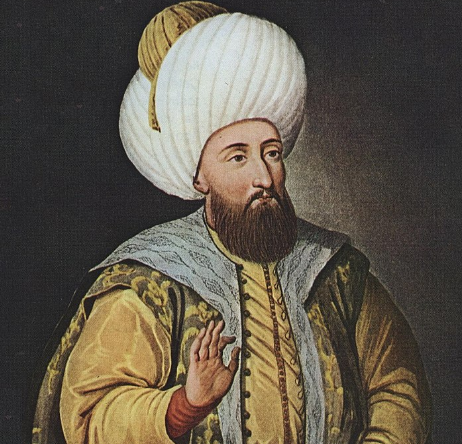
Sultan Murad II (16 June 1404 – 3 February 1451)
In 1373, during the reign of Emperor John V, Byzantium became a vassal state of the Ottoman Empire. At that time they had to pay regular taxes, they had to give military aid to the Ottoman forces in various wars. John’s later descendants, however, managed to temporarily improve the situation.
After Sultan Murad II came to power in 1421, however, putting the final nail in the Byzantine coffin, plans for the siege of Constantinople began. Finally, on May 29, 1453, the eastern part of the Roman Empire (Constantinople) fell under the rule of his son Sultan Mehmed II. The Ottoman army entered Constantinople that day in the guise of a hero.
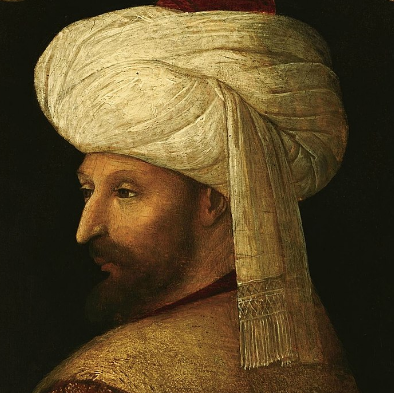
Sultan Mehmed II (30 March 1432 – 3 May 1481)
The death of the then Byzantine Emperor Constantine XI finally brought an end to the Byzantine Empire, which began in 330 AD, ending another chapter in history that had been in the making for nearly eleven hundred years.
Sources
- https://www.khanacademy.org/humanities/world-history/medieval-times/byzantine-empire/a/the-rise-of-the-byzantine-empire
- https://www.studysmarter.co.uk/explanations/history/spread-of-islam/fall-of-the-byzantine-empire/
- https://www.history.com/news/10-things-you-may-not-know-about-the-byzantine-empire
- https://hum54-15.omeka.fas.harvard.edu/exhibits/show/theodosian_walls_gardens/fall
- https://www.ancient-origins.net/ancient-places-europe/byzantine-empire-0012322
- https://study.com/academy/lesson/the-slow-decline-of-the-byzantine-empire.html
- https://www.worldatlas.com/articles/when-did-the-byzantine-empire-fall.html
- https://kids.britannica.com/students/article/Byzantine-Empire/273428
- https://www.thecollector.com/when-did-the-byzantine-empire-fall/
- https://www.britannica.com/place/Byzantine-Empire
- https://www.worldhistory.org/Byzantine_Empire/

